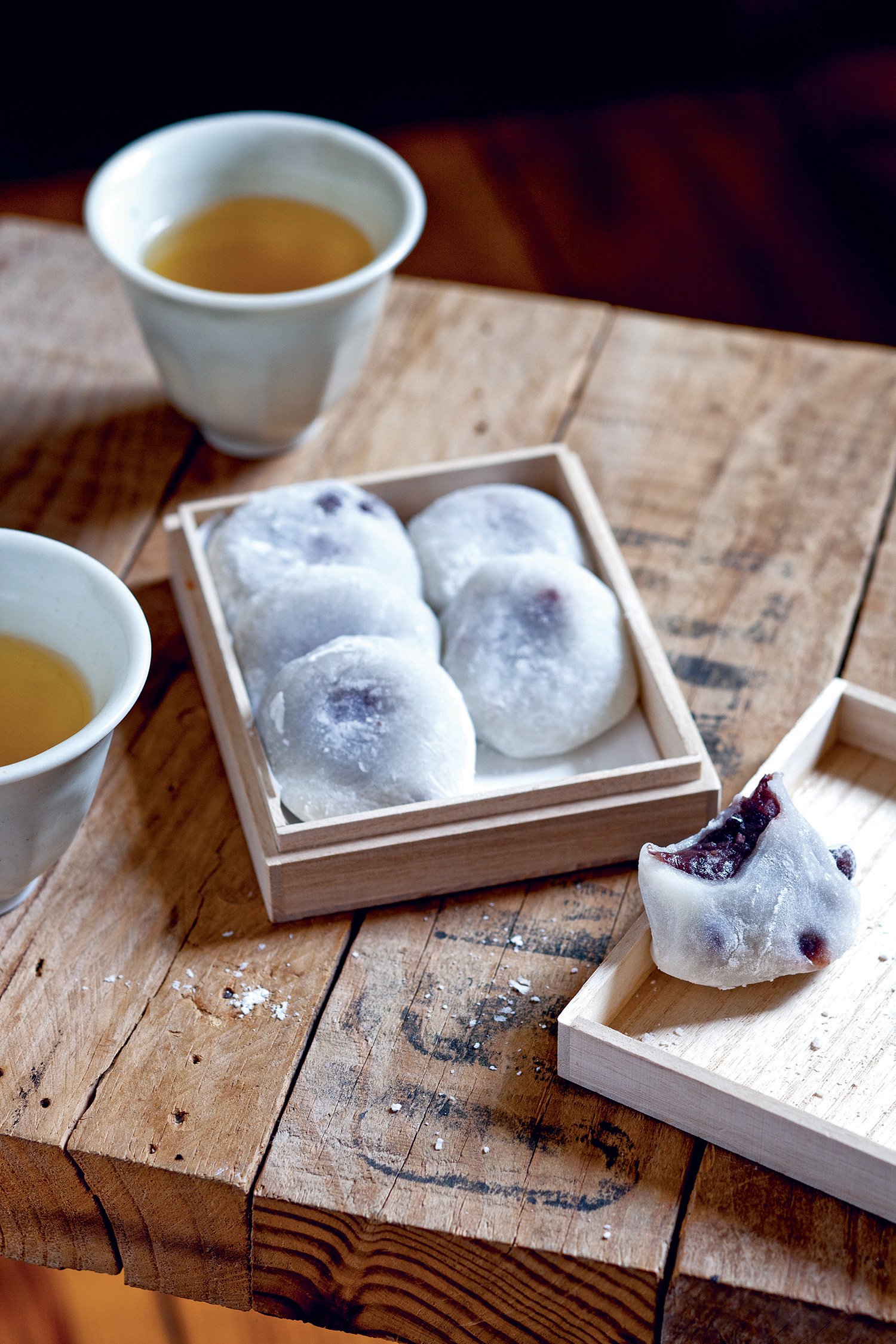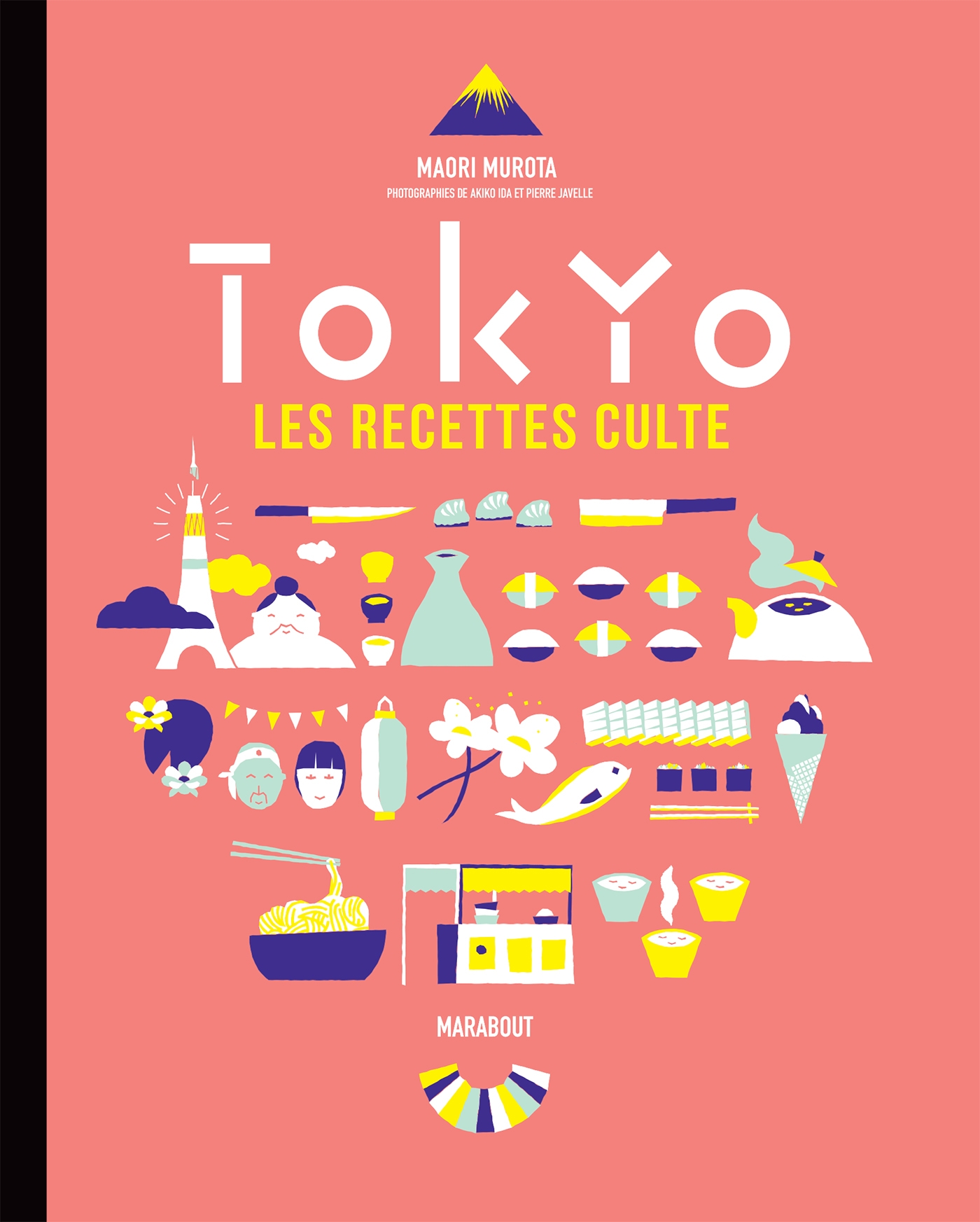Recipe for ‘daifuku mochi’ by Maori Murota
For the chef and caterer, these rice cakes stuffed with red bean paste make the ideal sweet treat to have at the end of a meal.

© Éditions Marabout
Maori Murota confesses that she isn’t really a ‘dessert person.’ As such, she decided that the Japanese desserts included in her book—Tokyo Cult Recipes—to please readers with a sweet tooth, would be only the very best. These daifuku mochi are one such example. Made from mochi, a sticky rice paste, they are filled with anko, mashed, cooked red beans.
The caterer sings the praises of these little mouthfuls. ‘The Japanese aren’t mad about desserts. As there is sugar in our dishes, supplemented by rice and with sake as an accompaniment, we’re verging on a sugar overdose. Daifuku are perfect for the end of a meal because they are soft and light.’
Makes 8 daifuku
Ingredients
30 mins preparation time
1 hour 15 mins cooking time
200 g koshian
3 tablespoons cooked red beans
100 g shiratama-ko (sticky rice flour)
60 g sugar
1 teaspoon fine salt
150 ml water
Potato starch
Method
Divide the koshian paste into eight portions, then shape into balls using two spoons. Set aside on a plate in the refrigerator.
Combine the shiratama-ko, sugar, salt, and water in a microwave-safe bowl. Heat in the microwave for two minutes at 600 watts. Take out and mix with a wet spatula.
Heat for another 40 seconds to one minute at 600 watts. The dough should now be translucent. Incorporate the adzuki beans.
Dust a large tray with enough potato starch to completely cover the surface, then place the dough on the tray. Dust the surface of the dough with potato starch.
Divide into eight using a dough-cutter. The dough needs to be worked while it is still hot, but be careful not to burn yourself.
Take the balls of koshian out of the refrigerator. Stretch a piece of the dough with your hands until it is big enough to wrap around a ball of koshian. Place the piece of dough in the hollow of your hand and dust off any excess potato starch.
Put a ball of koshian in the middle. Close the dough over it, pinching the edges together to seal.
Place the daifuku, seam-side down, on a plate dusted with potato starch.
Make the others in the same way.
Tokyo Cult Recipes (2020) by Maori Murota is published by Murdoch Books.
After having trained in the kitchens of Le Verre Volé sur Mer and La Conserverie in Paris, Maori Murota embarked on a career as a caterer for events, and includes 100 Japanese family recipes in her book. Classified by category, the book shares typical dishes to serve from breakfast to dinner. But that’s not all: Maori Murota designed this book to be a culinary journal in which the reader discovers prominent Japanese chefs and artisans, who share some secrets of Japanese cuisine.
Tokyo Cult Recipes is the first book by Maori Murota, who also collaborates with the Japanese newspaper Asahi Shimbun to create recipes.

© Éditions Marabout
TRENDING
-
The Tattoos that Marked the Criminals of the Edo Period
Traditional tattoos were strong signifiers; murderers had head tattoos, while theft might result in an arm tattoo.

-
Paris, Tokyo: Robert Compagnon
With his co-chef and talented wife, Jessica Yang, Robert Compagnon opened one of the top new restaurants in Paris: Le Rigmarole.
 3:31
3:31 -
Chiharu Shiota, Red Threads of the Soul
Last year, more than 660,000 people visited the retrospective 'Chiharu Shiota: The Soul Trembles' exhibit at the Mori Art Museum.

-
‘Before Doubting Others, Doubt Yourself. Who Can Truly Say a Dish Isn’t What It Used to Be?’
In ‘A Non-Conformist’s Guide to Surviving Society’, author Satoshi Ogawa shares his strategies for navigating everyday life.

-
The Story of Sada Yacco, the Geisha who Bewitched Europe
Described by Dazed magazine as the first beauty influencer, she has been restored to her former glory since 2019.





